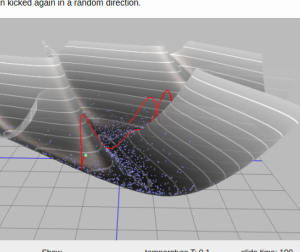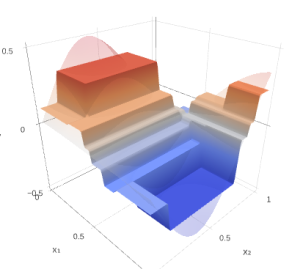.new_item for python lists
Simple but neat python class AppendableList is introduced
and explained in this post.
First, let me describe the situation when I need it. For example, take a Lasagne tutorial. It is quite long (which pushes researchers from lasagne), but mostly filled with fairly trivial operations that make it hard to grasp everything fast.
Expressiveness ( = ability to write what you want to do without spending time on introducing additional entities) is considered to be a strong side of python.
But in this example it seems to me that newcomer may be lost in the jungles of computing validation quality:
# And a full pass over the validation data:
val_err = 0
val_acc = 0
val_batches = 0
for batch in iterate_minibatches(X_val, y_val, 500, shuffle=False):
inputs, targets = batch
err, acc = val_fn(inputs, targets)
val_err += err
val_acc += acc
val_batches += 1
# Then we print the results for this epoch:
# < I've deleted some lines not important here >
print(" validation loss:\t\t{:.6f}".format(val_err / val_batches))
print(" validation accuracy:\t\t{:.2f} %".format(val_acc / val_batches * 100))
It is better to inspect original code, here I give a minor part of a function.
Basically, we compute two measures of quality (loss value, which is called err here, and accuracy)
on minibatches and average those over minibatches.
Now, how this would be done in python if there was only one metric of quality?
validation_accuracies = [val_fn(inputs, targets) for inputs, targets
in iterate_minibatches(X_val, y_val, 500, shuffle=False)]
print(" validation accuracy:\t\t{:.2f} %".format(numpy.mean(validation_accuracies) * 100))
Less code, easier to grasp, the same amount of operations. In particular the last line explicitly says: print averaged validation accuracies.
When I try to follow “pythonic way” to write this for original case with two metrics of quality, I get something like:
validation_losses_and_accuracies = [val_fn(inputs, targets) for inputs, targets
in iterate_minibatches(X_val, y_val, 500, shuffle=False)]
validation_losses, validation_accuracies = zip(*validation_losses_and_accuracies)
print(" validation loss:\t\t{:.6f}".format(numpy.mean(validation_losses)))
print(" validation accuracy:\t\t{:.2f} %".format(numpy.mean(validation_accuracies) * 100.))
This code is not that bad, but required some kung-fu and may look even more scary for a python novice.
Now let’s imagine that during tuple unpacking we can append values to lists without storing those in intermediate variable.
validation_losses = AppendableList()
validation_accuracies = AppendableList()
for inputs, targets in iterate_minibatches(X_val, y_val, 500, shuffle=False):
validation_losses.new_item, validation_accuracies.new_item = val_fn(inputs, targets)
print(" validation loss:\t\t{:.6f}".format(numpy.mean(validation_losses)))
print(" validation accuracy:\t\t{:.2f} %".format(numpy.mean(validation_accuracies) * 100.))
In my opinion, this solution is quite beneficial: it is quite readable and does what it is expected to do. Also this trick interplays well with other python features.
Implementation of AppendableList
class AppendableList(list):
"""
Python list with additional property '.new_item', which supports only setting, not getting.
Example:
>>> x = AppendableList()
>>> x.new_item = 4
>>> x.new_item = 2
>>> x
Out: [4, 2]
Intended to be used during unpacking tuples.
>>> weights, heights = AppendableList(), AppendableList()
>>> for person in some_people_base():
>>> weights.new_item, heights.new_item = person.get_weight_and_height()
"""
def __setattr__(self, name, value):
"""Handling setting new_item. Pay attention, that this is only a readable property """
if name == 'new_item':
# appending new item to the end of list
self.append(value)
super(AppendableList, self).__setattr__(name, value)
def __dir__(self):
"""Method to list available fields. Adding new_item"""
return dir(list) + ['new_item']
Why not split computing metrics in two different methods?
Splitting into separate functions should be avoided, because this will result in doubling the amount of computations. It is crucial in the case of neural networks, since the amount of computations may be huge.
 Gradient boosting
Gradient boosting  Hamiltonian MC
Hamiltonian MC  Gradient boosting
Gradient boosting  Reconstructing pictures
Reconstructing pictures  Neural Networks
Neural Networks